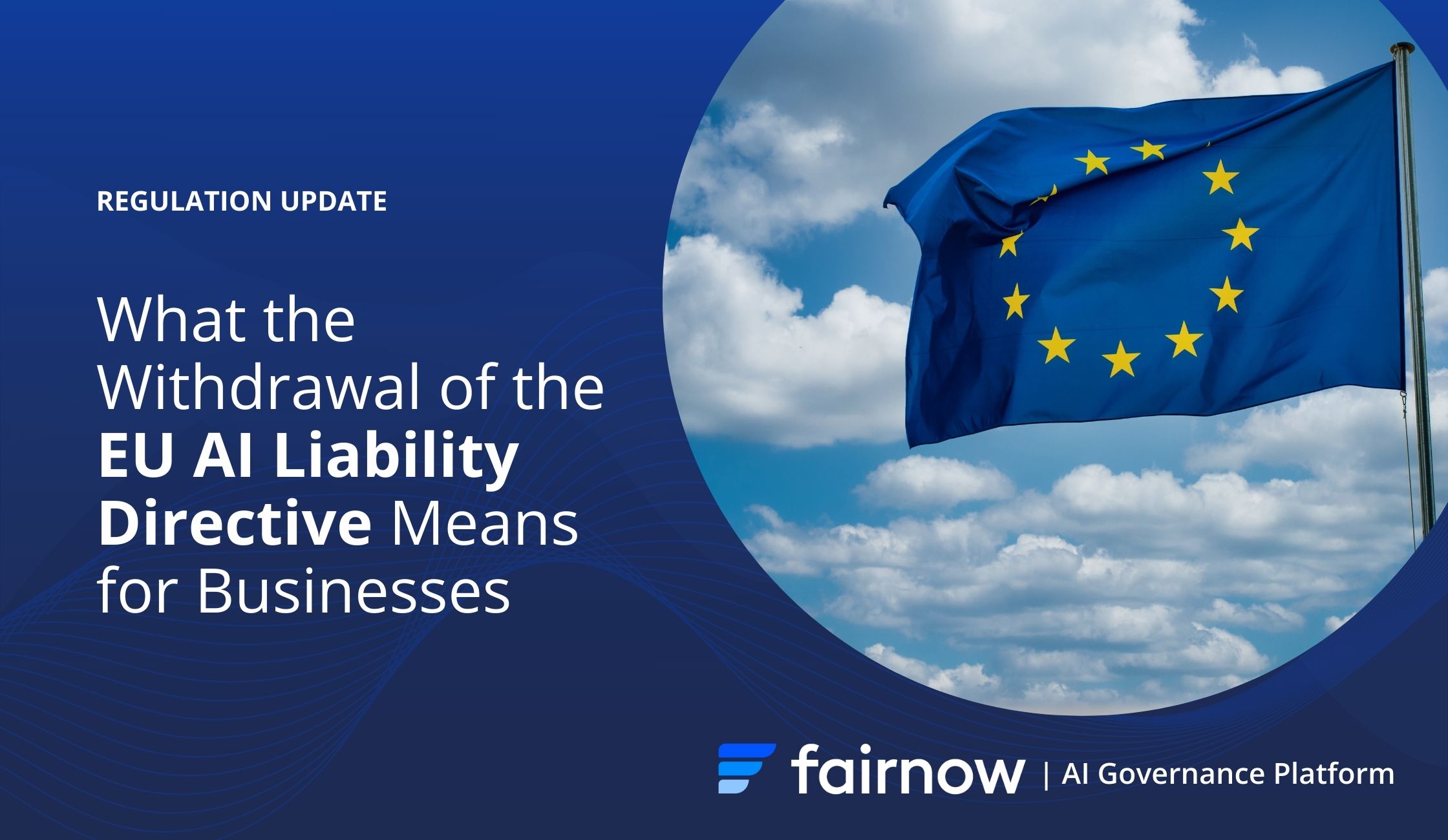On Wednesday, February 12, 2025, the European Commission made the surprising decision to drop the EU AI Liability Directive from consideration.
What was the EU AI Liability Directive?
The Directive was proposed to the EU Parliament in 2022 alongside its companion bill, the EU AI Act, which passed in 2024.
The EU AI Act’s requirements and significant penalties for non-compliance still stand unchanged, and the first provisions went into effect just a few weeks ago. But without the EU AI Liability Directive, it will be more challenging for individuals to seek compensation for AI-caused harms.
The bill was meant to complement the EU AI Act, which aims to prevent AI-caused harms, by updating the rules to establish when consumers can seek damages after harm has occurred.
While AI is still covered under the EU’s existing Product Liability Directive, the AI Liability Directive was developed to ensure that the EU’s liability scheme was sufficient and able to keep up with the fast pace of AI development.
Why was it dropped?
Businesses have pushed back against the bill since it was first proposed, arguing that it was both unnecessary and costly, and could require them to divulge large amounts of proprietary information. Given this opposition, the Commission stated that there is no “clear path forward” towards passing in 2025.
It is unclear if anyone will lead efforts to revise or revive it.
What would the AI Liability Directive have required?
The Liability Directive aimed to develop a harmonized approach to establishing liability and seeking redress across the EU that was able to adapt to the evolving technology.
Specifically, it would have made it easier for individuals to seek compensation when they’ve been harmed by AI. Courts would have been given easier access to evidence, including technical documentation and logs. Noncompliance with the EU AI Act would be taken as evidence of “faulty” AI, opening the path to establish liability.
What you need to know:
- Companies are still liable for AI harms. AI is still covered under the EU’s existing product liability rules. But the AI Liability Directive would have strengthened the means for plaintiffs to seek damages.
- Will the EU take a lighter touch on AI regulation? The EU might be taking a less heavy-handed approach to AI regulation. The decision follows comments from EU leaders Macron and von der Leyen speaking about the need to cut red tape at the recent AI Action Summit in Paris, and amid broader concerns that the EU is falling behind in technology and AI development.
- Not all are happy with the decision. Most notably, Member of the European Parliament Axel Voss railed against the withdrawal. According to Voss, AI liability will become “a fragmented patchwork of 27 different national legal systems,” stifling European companies. Voss also challenged the idea that the Liability Directive would add excessive regulatory burden, saying it only takes effect after harms are believed to have occurred.
About Implement an AI Governance Program:
- Develop an AI governance plan: AI governance programs can help organizations track and manage their approved AI within internal and vendor technologies. They establish the groundwork for consistent review of AI applications, and ensure consistent and ongoing review as the AI landscape and capabilities rapidly change.
- Use technology streamline and track AI use: An AI governance platform like FairNow can help IT organizations increase visibility and stay on top of their companies’ AI. AI governance platforms increase transparency and reduce the risks of AI adoption.
We’re here to help
FairNow is on a mission to simplify, streamline, and automate AI governance at scale.
Reach out for a free consultation or demo today.
Keep Learning




